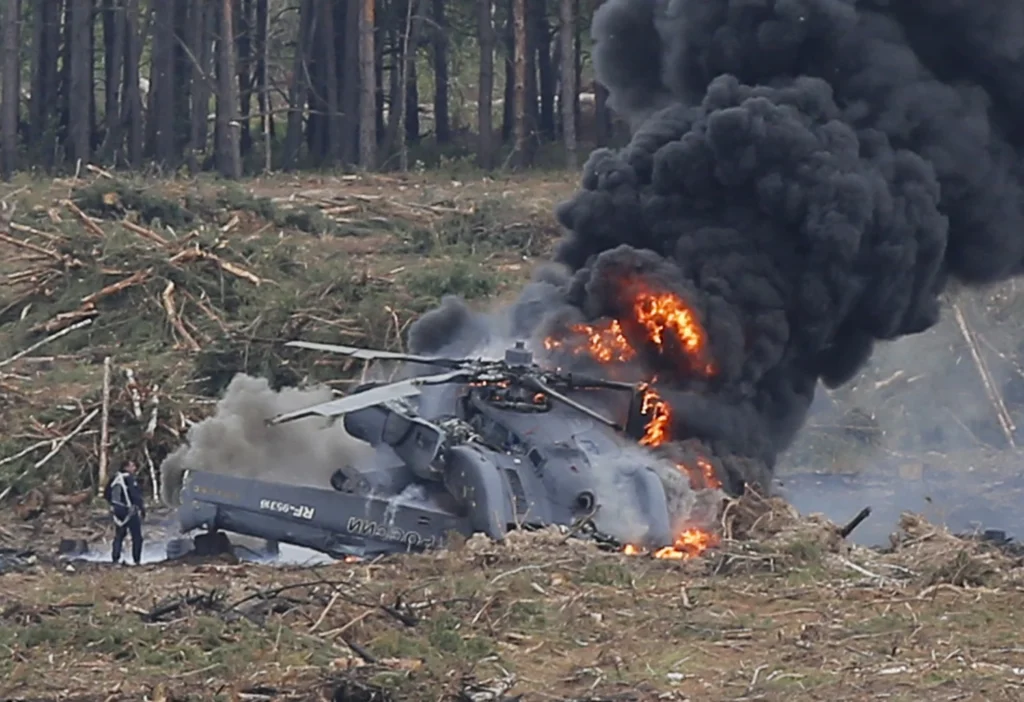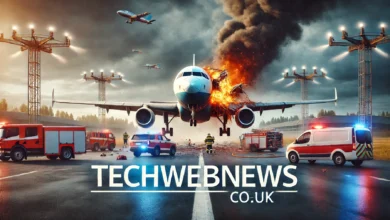Helicopter Crash: Causes, Consequences, and Lessons Learned

When we hear the words helicopter crash, it often sparks feelings of shock and fear. Helicopters, despite being an incredible engineering achievement, come with risks that sometimes lead to tragic accidents. These crashes capture global headlines, whether they involve military operations, celebrities, rescue missions, or everyday transportation.
But what exactly causes helicopter crashes? How are they investigated? And more importantly, what lessons can we take from them to improve safety in the skies? In this article, we’ll dive deep into the topic—covering causes, real-world examples, aftermaths, and the future of helicopter safety.
Understanding Helicopter Crashes

Helicopters are fundamentally different from airplanes. While airplanes rely on forward motion and fixed wings for lift, helicopters achieve vertical takeoff, hovering, and multi-directional flight through spinning rotor blades. This versatility makes them essential for rescue operations, military missions, medical transport, and even luxury travel.
However, this complexity also means helicopters are more mechanically intricate and susceptible to risks. A minor mechanical fault, bad weather, or a split-second misjudgment can sometimes result in catastrophic accidents.
Statistically, helicopter crashes occur less frequently than car accidents, but they are often more severe due to the lack of margin for error in mid-air. For this reason, helicopter crash investigations are taken extremely seriously, and every incident often leads to further safety regulations.
Common Causes of Helicopter Crashes
While each crash is unique, several recurring causes have been identified by aviation authorities worldwide.
1. Mechanical Failures
Helicopters rely on a complex system of moving parts, including rotors, engines, and transmission systems. If a crucial component like the main rotor blade, tail rotor, or gearbox malfunctions, it can lead to sudden loss of control. Even with rigorous maintenance checks, unexpected mechanical failures sometimes happen, making them one of the leading causes of crashes.
2. Pilot Error
Human error remains a major factor in aviation accidents. Pilots must make split-second decisions in high-pressure situations, and a misjudgment in altitude, speed, or maneuvering can result in disaster. Helicopter pilots often face challenging environments, such as flying close to mountains, urban areas, or bad weather conditions, where even minor mistakes can have serious consequences.
3. Weather Conditions
Adverse weather, including fog, heavy rain, snow, or strong winds, can significantly increase the risk of helicopter crashes. Unlike large commercial airplanes equipped with advanced navigation systems, helicopters often fly at lower altitudes, which makes them more vulnerable to sudden weather changes.
4. Operational Hazards
Many helicopters are used in risky missions such as firefighting, search and rescue, and military operations. These high-stakes environments increase the likelihood of accidents simply because helicopters are being pushed to their limits in dangerous conditions.
Notable Helicopter Crashes That Shook the World
1. Kobe Bryant’s Tragic Crash (2020)
One of the most widely reported helicopter crashes in recent years was the accident that killed basketball legend Kobe Bryant, his daughter Gianna, and seven others in California. The crash was attributed to poor visibility and challenging weather conditions. This incident highlighted the dangers of flying in foggy environments and led to renewed calls for stricter flight rules for helicopters.
2. Military Helicopter Accidents
Helicopters play a vital role in military operations, but this also makes them vulnerable to crashes. Over the decades, several tragic military helicopter accidents have occurred worldwide, often during training missions or combat operations. These crashes emphasize both the bravery of military pilots and the extreme risks they face.
3. Medical Evacuation Crashes
Air ambulances are lifesaving tools, but they also face pressure to fly in difficult conditions to save patients. Sadly, this has led to multiple crashes in which both patients and medical staff lost their lives. Each incident sparks debates about balancing urgency with flight safety.
The Aftermath of a Helicopter Crash
The consequences of a helicopter crash go far beyond the immediate tragedy.
1. Loss of Lives and Emotional Impact
The most obvious and devastating aftermath is the loss of human life. Families, friends, and entire communities are often left mourning. High-profile crashes involving celebrities or public figures can even impact global audiences, as seen in Kobe Bryant’s case.
2. Financial and Legal Consequences
Helicopter crashes often result in costly lawsuits, insurance claims, and legal battles. Questions about liability—whether it was the manufacturer’s fault, pilot negligence, or weather conditions—can drag on for years in court.
3. Safety Investigations
Every helicopter crash is thoroughly investigated by aviation authorities, such as the National Transportation Safety Board (NTSB) in the U.S. Investigations can take months or even years, but the goal is always the same: determine the cause and prevent future tragedies.
How Helicopter Safety Has Improved
Despite the risks, helicopter safety has significantly improved over the decades. Modern helicopters are equipped with advanced technology designed to reduce the likelihood of accidents.
1. Improved Navigation Systems
Today’s helicopters feature GPS-based systems, terrain warning sensors, and weather monitoring tools that provide real-time data to pilots. This reduces the risk of crashes caused by poor visibility or misjudgment.
2. Stricter Regulations
Aviation authorities worldwide continue to update safety regulations for helicopter operations. After each crash, new rules are often implemented to address gaps—whether it’s stricter weather minimums, better pilot training, or mandatory safety equipment.
3. Enhanced Pilot Training
Pilots undergo rigorous training not only in flight skills but also in handling emergencies. Simulators are now commonly used to prepare pilots for worst-case scenarios, giving them the tools to react quickly in real-life situations.
The Psychological Effect of Helicopter Crashes
Helicopter crashes don’t just have physical consequences—they also have a lasting psychological impact.
- For survivors, the trauma can result in post-traumatic stress disorder (PTSD) or a lifelong fear of flying.
- For families of victims, the emotional scars are deep and often compounded by unanswered questions about the crash.
- For the public, high-profile crashes create fear and mistrust toward helicopters, even though statistically they are relatively safe when compared to the number of flights conducted daily.
This psychological dimension is one of the reasons why helicopter crash stories remain powerful news headlines.
The Role of Helicopters Despite the Risks
Despite the dangers, helicopters remain indispensable in today’s world. They can access remote areas where planes or cars can’t reach, making them essential in emergencies. From delivering aid in natural disasters to transporting injured patients in golden-hour rescues, helicopters save thousands of lives each year.
Their risks are undeniable, but so is their importance. The aviation industry continues to balance these realities by pushing for safer technology, better training, and more reliable regulations.
The Future of Helicopter Safety
Looking forward, advancements in aviation technology promise to reduce the risk of helicopter crashes even further.
- Electric and hybrid helicopters are being developed with fewer mechanical parts, which could lower the risk of mechanical failure.
- Autonomous flight systems may soon assist or even replace pilots, reducing human error.
- Improved weather prediction tools will help pilots make better-informed decisions before takeoff.
While crashes may never be eliminated entirely, the future holds promise for safer skies.
Conclusion
A helicopter crash is always a tragedy, often magnified by its suddenness and the number of lives lost. From mechanical failures to human errors and unpredictable weather, the causes vary—but every crash leaves behind lessons that shape the future of aviation safety.
Despite the risks, helicopters remain vital in rescue operations, military missions, and even luxury travel. With ongoing advancements in technology and stricter safety measures, the hope is that helicopter crashes will become increasingly rare.
At the end of the day, helicopters embody both risk and reward: they can save lives in impossible situations, but they also remind us of the fragile line between innovation and safety.
